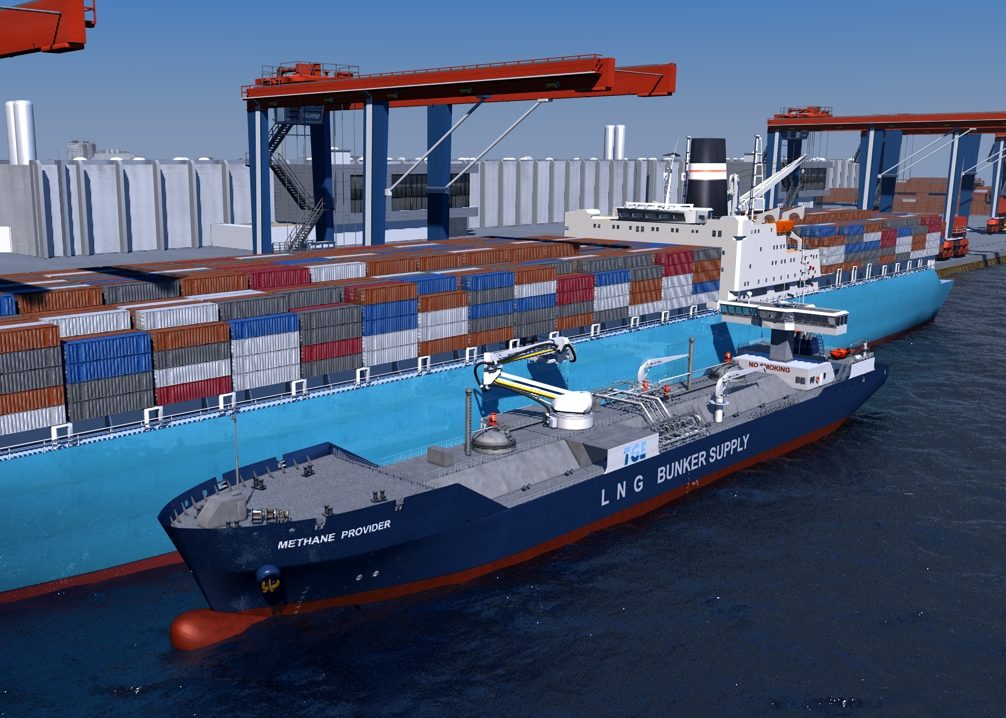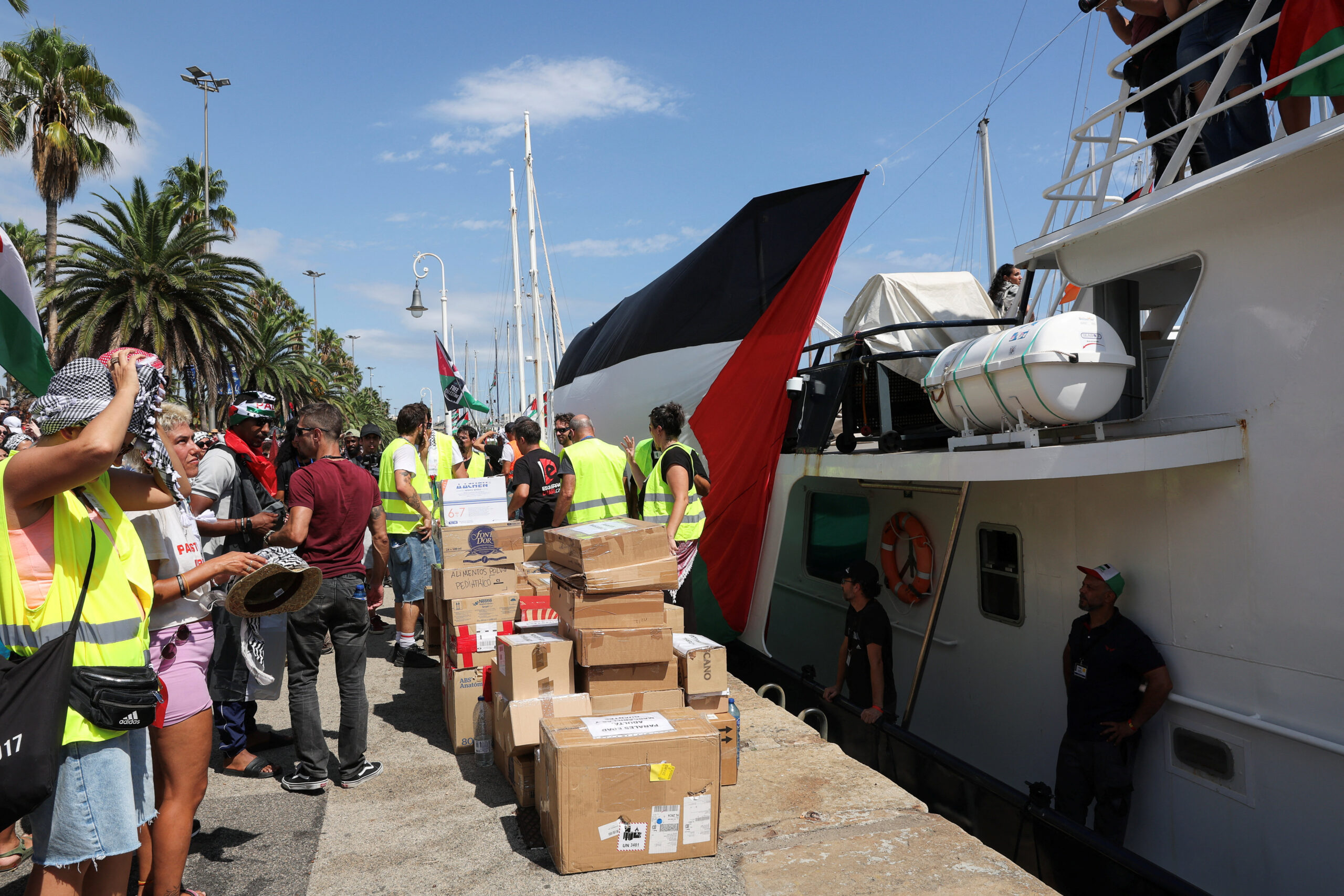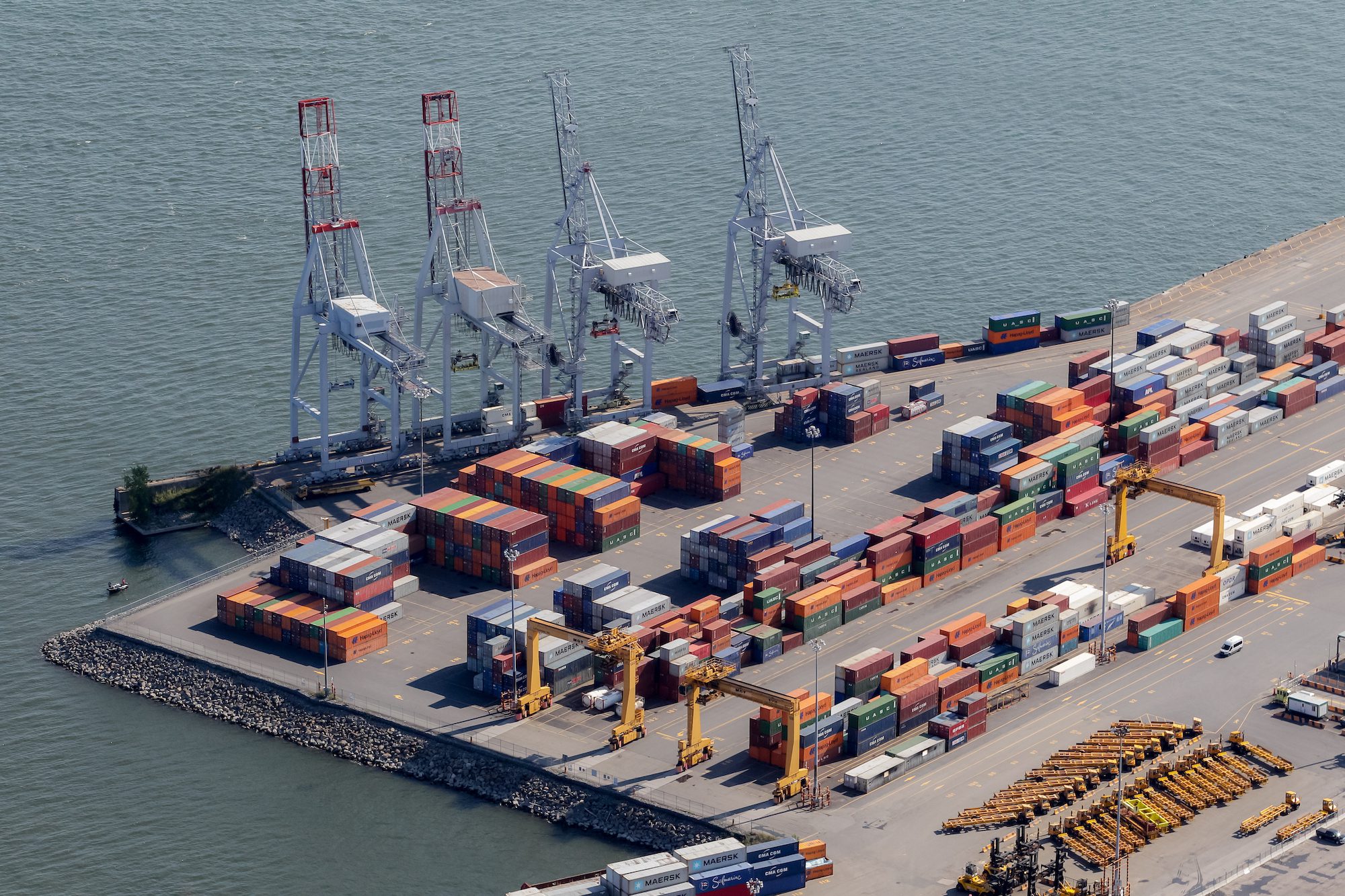LNG bunkering in Europe, Rendering via TGE, click for larger
The Port of Rotterdam has announced that as of 1 July, vessels can bunker LNG (Liquefied Natural Gas) in the port of Rotterdam. Up to now only inland shipping could do this in the Seinehaven.
The Port of Rotterdam notes this legislative amendment is a significant move by the Municipality of Rotterdam which they hope will help promote the growth of Rotterdam as a major LNG hub and the use of LNG as a shipping fuel – particularly for containerships, notes Rotterdam Harbour Master René de Vries.
“In the ten hours they stay in the port of Rotterdam, container ships should be able to bunker at the same time as they transfer cargo. This is only possible, if it happens ship-to-ship. And that is now possible,” notes de Vries.
The new rules also imply that LNG may only be bunkered at designated locations within the Municipality of Rotterdam. The legislation is based on national and international safety studies and laws and regulations, standards and best practice guidelines of other ports.
This news comes in tandem today with an announcement from GDF SUEZ, Mitsubishi and NYK which signed a framework agreement today to develop the LNG bunkering market through LNG bunkering vessels, starting in Zeebrugge, Belgium. This partnership will initially result in NYK’s order of an LNG bunkering vessel and a bunkering contract between GDF SUEZ and United European Car Carriers (UECC), a short-sea operator in the Northern Europe Emissions Controlled Area (ECA).
GDF SUEZ notes the LNG bunkering vessel will be built in the Korean shipyard Hanjin Heavy Industries with a delivery expected by 2016. Its home port will be Zeebrugge where GDF SUEZ has already secured long term access rights in the Fluxys LNG terminal. The bunkering vessel will be operated by NYK and will supply a range of end-customers.
The first customer will be UECC which purchased LNG to GDF SUEZ on a medium-term basis for its two new dual fuel (LNG and marine gasoil) car carrier ships operating in the North Sea and Baltic Sea. By the end of 2016, the LNG will be delivered by means of ship-to-ship transfer from the LNG bunkering vessel to the new ships ordered by UECC in the port of Zeebrugge.

 Join The Club
Join The Club











